Making curtains/drapes from scratch is a lot easier than you think. You’re basically sewing four long straight lines. I think the hardest part is the amount of space it takes to lay out all the fabric. You can lay out your fabric on a dining room table or, even more efficiently, on the floor.
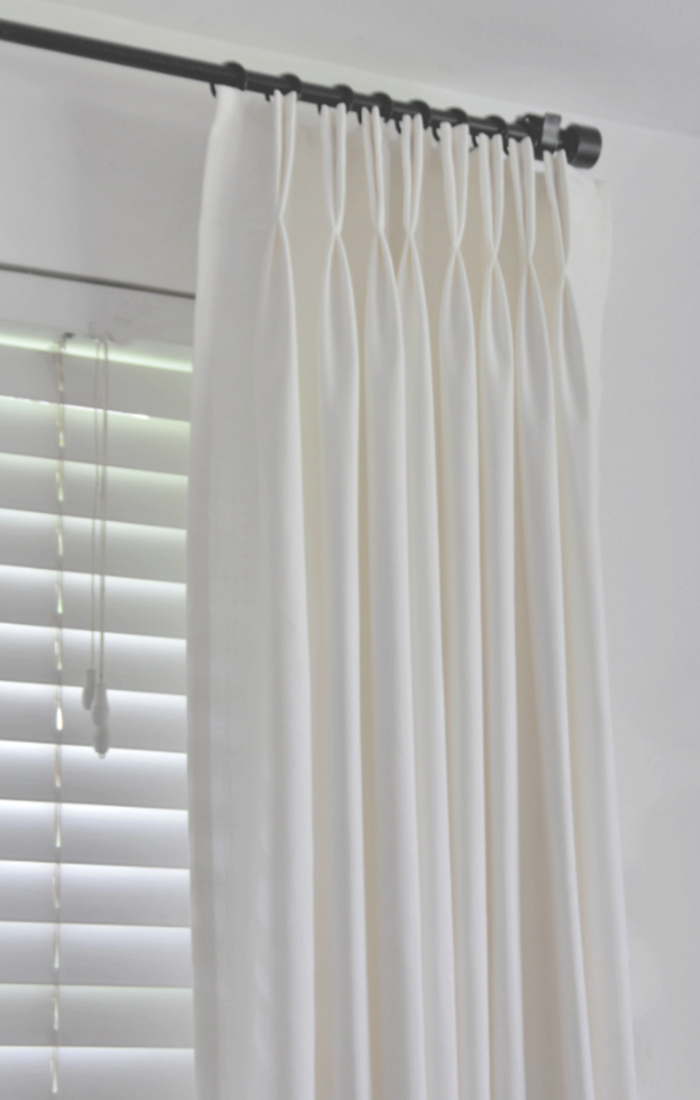 This tutorial I’ll explain how to measure your windows and calculate the yardage you need to properly cover your windows.
This tutorial I’ll explain how to measure your windows and calculate the yardage you need to properly cover your windows.
There are three things you need to decide before you measure.
1.How do you want to hang your drapes?
The way you hang your drapes will determine the finished length of your drapes.
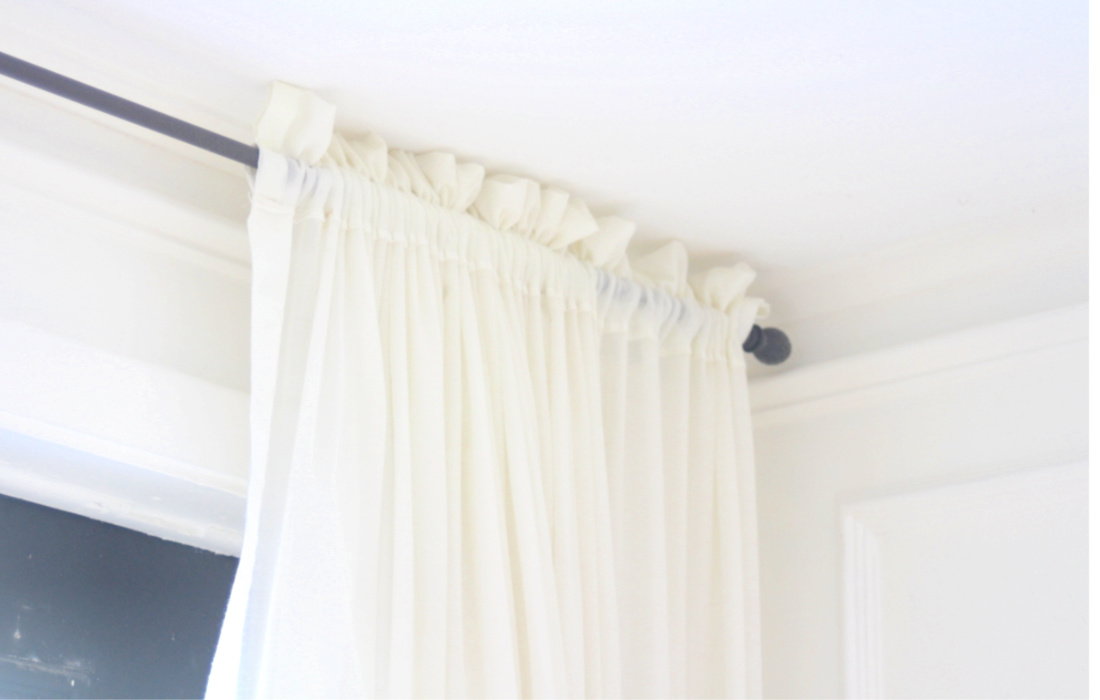
Do you simply want to create a rod pocket in your curtain and install the curtains directly onto the rod like the picture above? This method may be the cheapest route because there’s no hardware required. No rings and no drapery hooks.
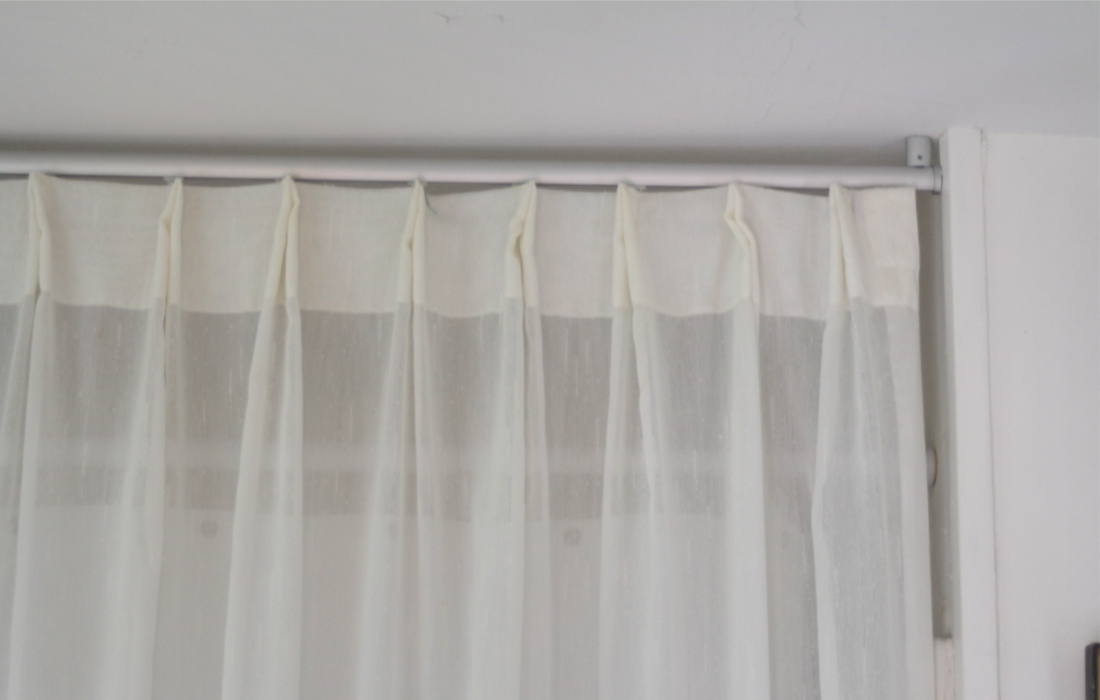 Do you want to install your drapes on a hospital track? The track method is very modern looking and makes opening and closing your drapes very easy. They glide like buttah, which makes this method perfect for a shower curtain.
Do you want to install your drapes on a hospital track? The track method is very modern looking and makes opening and closing your drapes very easy. They glide like buttah, which makes this method perfect for a shower curtain.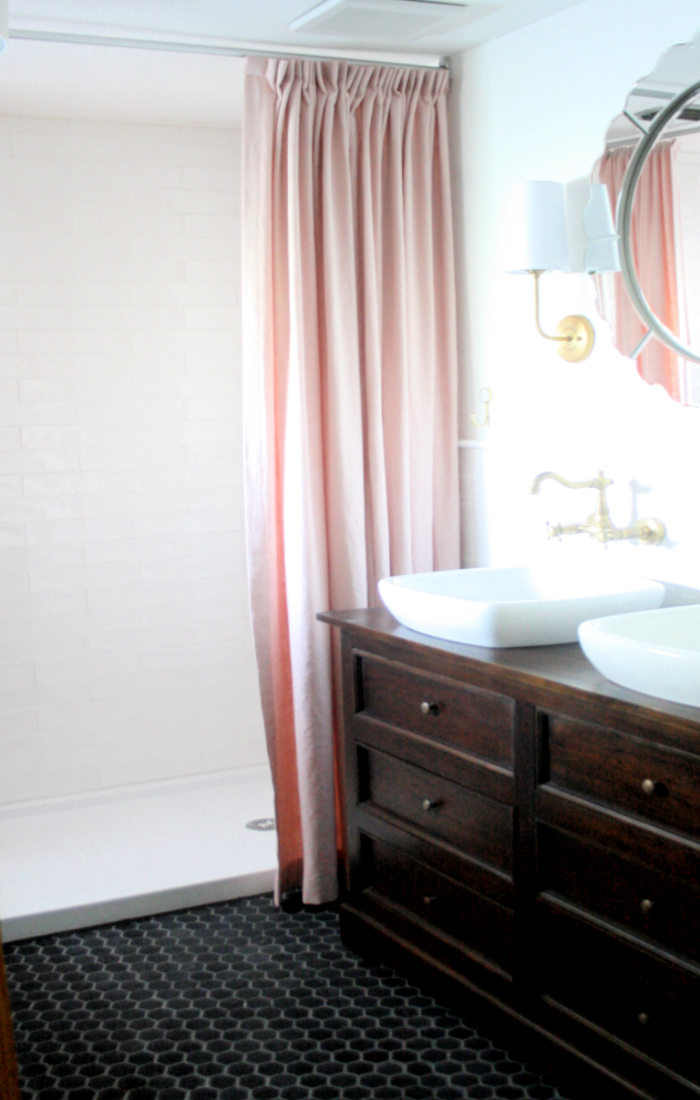 This pink drape in my kids bathroom is on an Ikea track. I installed the drapery hooks a little lower on the drapery header so the header sits right at the ceiling. When the curtain is closed you don’t even see the track. This is an efficient way to hang a drape in a bathroom because it opens and closes so easily. An important feature on a shower curtain.
This pink drape in my kids bathroom is on an Ikea track. I installed the drapery hooks a little lower on the drapery header so the header sits right at the ceiling. When the curtain is closed you don’t even see the track. This is an efficient way to hang a drape in a bathroom because it opens and closes so easily. An important feature on a shower curtain.
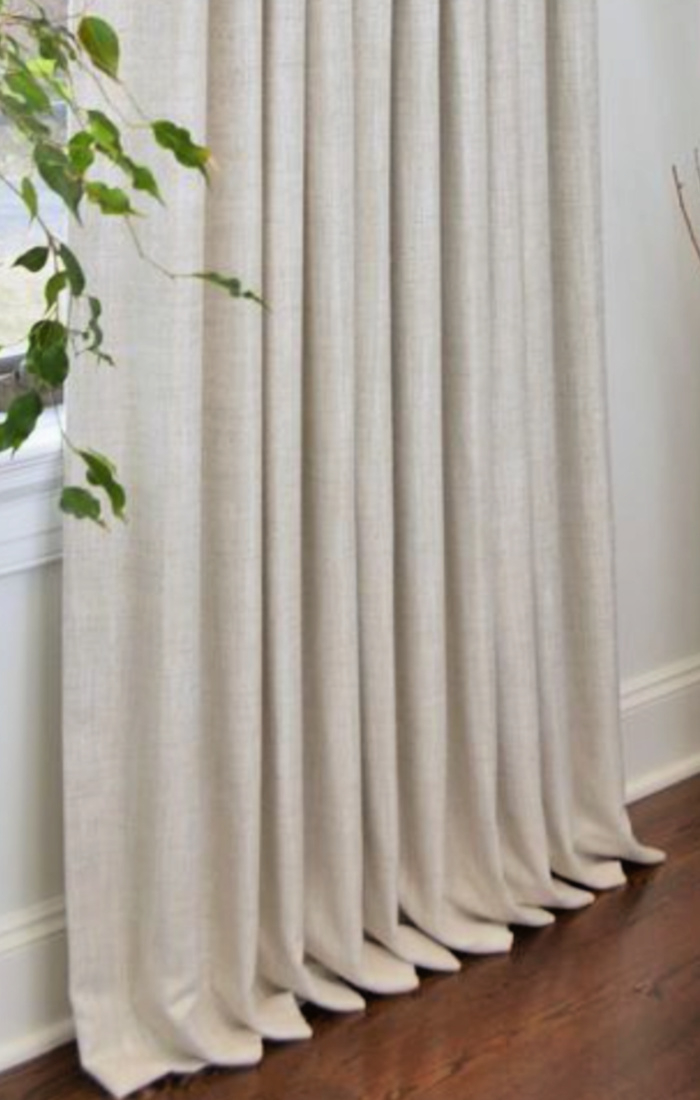 2. How do you want your curtains to hit the floor?
2. How do you want your curtains to hit the floor?
My preference is for my curtains/drapes to hang above the floor by about 2cm. I like for my curtains be off the floor a bit because I find it helps keep them clean. This is just my personal preference. Some people like to have trouser length curtains like the picture above. Trouser length allows your drapes to sit on the floor and break slightly like a pair of trousers.
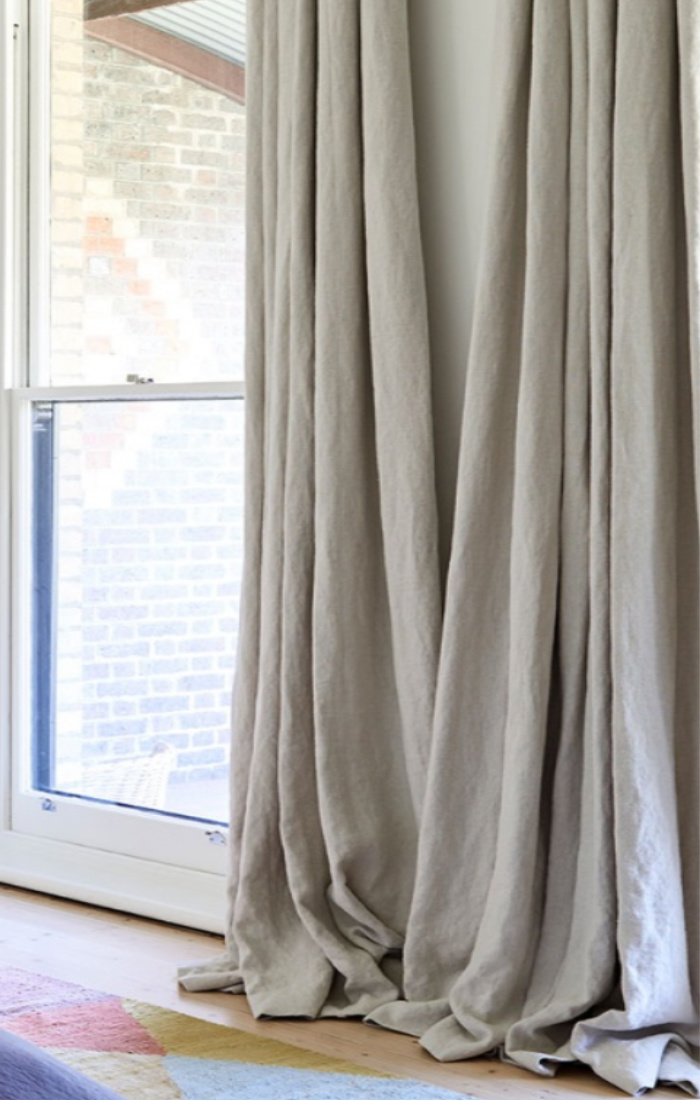 And you may be in the puddled curtain camp. This is a very casual look. It’s also helpful if you’re a novice drapery maker because it’ll hide imperfections in the length of your drapes. Puddled length is also great for drapes made from 100% linen because it inevitably stretches once it’s hung.
And you may be in the puddled curtain camp. This is a very casual look. It’s also helpful if you’re a novice drapery maker because it’ll hide imperfections in the length of your drapes. Puddled length is also great for drapes made from 100% linen because it inevitably stretches once it’s hung.
3. You have to decide if your drapes will be operable or just stationary and decorative.
If you plan to use your drapes for privacy, therefore opening and closing your drapes on a daily basis you need to make sure you have enough fabric to cover your windows when the drapes are closed. When your drapes are closed you should have 2 times, 2.5 times or 3 times the width of your window of fabric. So, if your window is 36″ wide, 2 times fullness would be 72″. Therefore if you are using a standard 54″ wide fabric, one width of fabric on each side of your widow will be more than sufficient.
If you have a very wide window you’ll obviously need more widths of fabric to cover the window. The key is to have some fullness in your fabric when the drapes are closed. You don’t want your drapes to look like a sheet pulled taut across your window. That defeats the purpose of making custom drapes right?
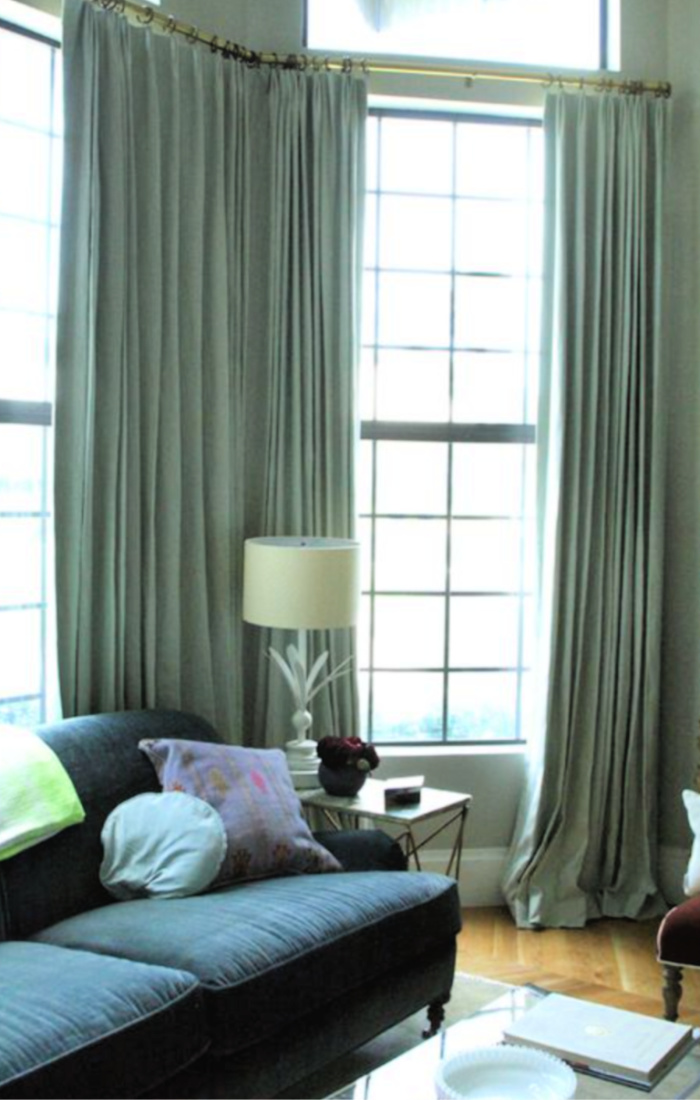
If you plan to install drapery panels purely for decoration, then you can get away with a single width of fabric on each side of your window. Keep in mind, as your ceiling gets taller the drapes get longer and therefore skinny looking on your window. If you have very tall ceilings you’ll probably need to make your panels double or even triple width of fabric to look right, and avoid looking like a ribbon on either side of the window. Not the look we’re after…we want full, luxurious looking drapes. The drapes pictured above are a perfect example of the fullness needed when you have high ceilings. Each of these panels is at least 1.5 widths of fabric and I bet they are each 2 widths fullness on each side. They look luxurious because the pleats and spaces are deep. Well done Jenny and Loom Decor workroom.
So….with these three decisions made you can now take out your tape measure and measure your windows. I have a drapery worksheet here. The worksheet is fill-in the blank and it’ll walk you through the process and in the end tell you how many yards of fabric you’ll need.
Also watch my drapery making video series here.
Starting with the first video on measuring and calculating yardage below.
Download drapery worksheet HERE.


 healthier living says
healthier living says
January 22, 2020 at 2:48 pmIts like you read my mind! You seem to know a lot about this, like you wrote the book in it or something. I think that you could do with some pics to drive the message home a little bit, but instead of that, this is magnificent blog. A fantastic read. I’ll definitely be back.